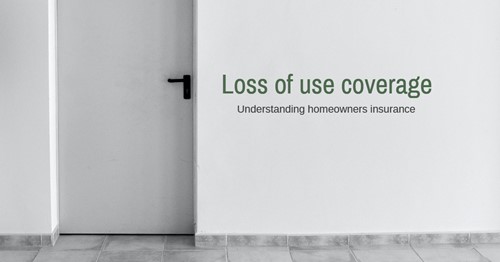
Loss of use coverage, or “coverage D,” is an important part of a standard homeowners insurance policy. While other parts of your policy can help you pay to repair damages to your home, loss of use coverage is there to help you while repairs are being made.
Depending on how long you have to wait before you can move back into your home, the total cost of your living expenses can increase dramatically. Luckily, loss of use coverage pays for a variety of essentials beyond the limit of your dwelling coverage.
Here is a quick guide to the kinds of additional living expenses covered by your loss of use insurance:
Flooding - Flood damage is handled separately from standard homeowners insurance policies. Therefore, if your home is uninhabitable due to flood, you won’t be covered by loss of use insurance during that time.
Earthquakes - Similarly to flood damage, earthquake damage requires an additional insurance policy. Without separate earthquake insurance, you’re financially responsible for repairs and any temporary living expenses.
Preexisting expenses - Loss of use insurance won’t cover any ongoing expenses you already had before the damage. This would include monthly mortgage payments, utility bills, property taxes and credit card bills.

Your insurance company can give you the details about any other important exceptions to loss of use coverage. The more you know about covered additional living expenses, the better peace of mind you’ll get from your homeowners insurance policy.

Home ownership is one of the largest and most exciting investment a person will ever make, for that reason it should be one of the most pleasant and memorable experience in an individual's life. When the time comes for you to buy a home or to sell your home, please remember to allow me to put all my knowledge and experience to work for you. I would be delighted to serve you.